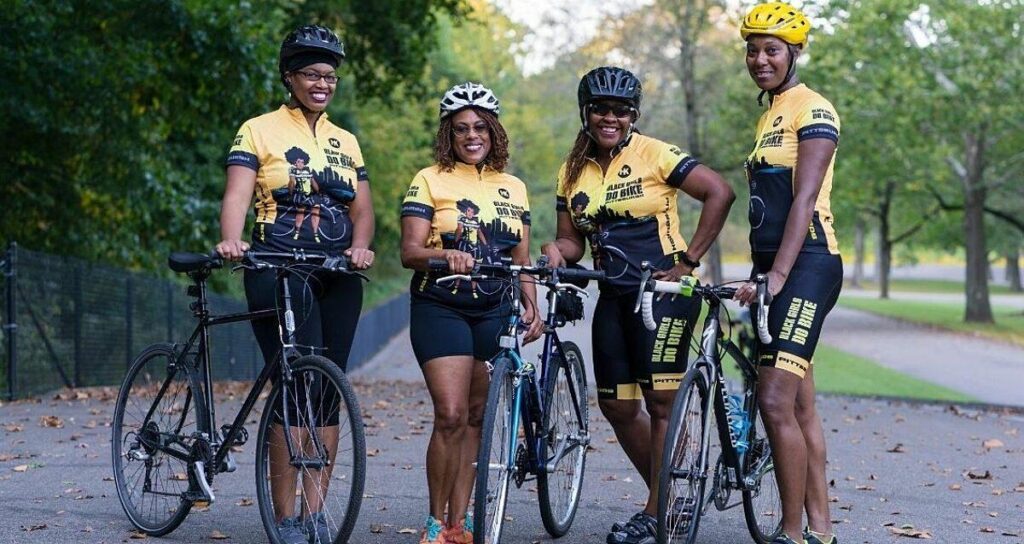Women in Cycling Evolves from Camaraderie to Data-Driven Purpose: A New Era for Advocates in the Industry
In recent years, the landscape of women in cycling has undergone a profound transformation, shifting from a grassroots camaraderie to a data-driven approach that aims to redefine the role of female cyclists within the industry. Once fueled primarily by passion and community support, the movement now harnesses analytics and research to target key issues and propel women’s cycling into a new era of visibility and influence. As data continues to reveal critical insights into participation rates, barriers to entry, and the overall cycling experience for women, advocates are leveraging this information to forge a more equitable cycling culture. This article delves into the evolving dynamics of women in cycling, exploring how the integration of data and purpose is shaping the future of the sport and inspiring new generations of female cyclists across Europe and beyond.
Women in Cycling Embracing a New Era of Collaboration and Competition
The landscape of women’s cycling is witnessing a transformative shift as athletes increasingly embrace a culture defined by collaboration and competition. Historically known for its camaraderie, the sport is now leveraging data analytics, sophisticated training regimes, and strategic partnerships to elevate performance. Teams are examining historical performance metrics, adapting training plans, and utilizing advanced technology to create a competitive edge. This strategic evolution not only fosters individual excellence but also encourages teamwork, promoting a more robust and interconnected community among female cyclists.
To facilitate this burgeoning collaboration, various organizations and sponsorships are stepping up, focusing on the creation of mentorship programs, workshops, and network events tailored to women in cycling. These initiatives are designed to empower young athletes and seasoned competitors alike, paving the way for an environment that values knowledge sharing and strategic networking. As a result, women in cycling are not just racing against each other; they are working together to shape the future of the sport. Below is a snapshot of the current initiatives fostering this new era:
| Initiative | Purpose | Target Audience |
|---|---|---|
| Mentorship Program | Connect experienced cyclists with newcomers | Young Female Cyclists |
| Data-Driven Workshops | Teach use of analytics for performance improvement | All Women Athletes |
| Networking Events | Build professional ties within the cycling community | Industry Leaders & Athletes |
The Rise of Data Analytics in Women’s Cycling: Transforming Performance and Engagement
As data analytics continues to permeate various sectors, women’s cycling is experiencing a significant transformation by harnessing the power of data to enhance both performance and engagement. This shift from a focus solely on camaraderie to a more analytical approach has empowered female athletes and teams to make informed decisions. By leveraging wearable technology, biomechanics analysis, and performance tracking systems, athletes are now able to compile a wealth of data that can pinpoint strengths and weaknesses, optimize training regimens, and improve race strategies. The impact of this data revolution is not just limited to professional cyclists; amateur riders and grassroots programs are also tapping into analytics to elevate their skills and competitive edge.
Beyond personal performance, data analytics is revolutionizing how teams interact with fans and engage with their communities. By utilizing social media metrics, engagement statistics, and viewer analytics, cycling organizations can tailor content that resonates with audiences, fostering a stronger connection between fans and athletes. This personalized interaction has led to increased sponsorship opportunities and greater visibility for women in cycling. Key findings from recent studies include:
- Increased race attendance due to targeted marketing strategies based on demographic insights.
- Enhanced fan loyalty through personalized communication and interactive experiences.
- Higher investment in women’s teams by sponsors, driven by a more compelling understanding of viewer engagement metrics.
| Data Metric | Impact on Cycling |
|---|---|
| Performance Tracking | Refined training programs and race strategies |
| Fan Engagement | Stronger community ties and sponsorships |
| Social Media Insights | Better content targeting and audience reach |
Strategies for Fostering Inclusivity and Growth in the Female Cycling Community
In the rapidly growing female cycling community, fostering inclusivity and growth involves implementing targeted strategies that resonate with women of all backgrounds. Key initiatives should focus on creating supportive environments where female cyclists can thrive through access to resources and community-building events. Consider the following approaches to enhance engagement:
- Mentorship Programs: Pairing experienced cyclists with newcomers can create a strong support network, encouraging skill development and building confidence.
- Diverse Representation: Ensuring diverse voices are included in decision-making processes helps tailor programs that meet the specific needs of various demographic groups.
- Tailored Events: Organize group rides, workshops, and safety sessions that cater especially to women, focusing on both fun and skill advancement.
Data-driven insights are invaluable for understanding and addressing the barriers women face in cycling. By actively collecting and analyzing participation data, organizations can identify trends and adapt their offerings accordingly. This not only enhances the overall experience but also sets a foundation for sustained growth. Below is a simple representation of cycling participation data:
| Year | Participation Rate (%) | Female-Centric Events Held |
|---|---|---|
| 2021 | 45 | 15 |
| 2022 | 55 | 22 |
| 2023 | 70 | 30 |
Utilizing these data points can aid in making informed decisions about future events and programs, ensuring that they resonate with the needs of the community and drive continued growth in female cycling participation.
In Retrospect
As the landscape of cycling continues to transform, so too does the role of women within this dynamic sphere. From fostering supportive communities to leveraging data-driven insights, the evolution of women’s involvement in cycling reflects a broader shift toward inclusivity and empowerment. The Women in Cycling initiative not only celebrates past achievements but also paves the way for future advancements, ensuring that voices of women are at the forefront of cycling’s development. As stakeholders in the industry increasingly recognize the importance of collaboration and analytics, the path ahead appears promising. With a firm commitment to purpose and progress, the cycling community stands on the brink of a new era, where women not only participate but lead and innovate. The journey is far from over, and as this movement grows, the impact will resonate far beyond the bike, shaping the future of the sport for generations to come.











